WARNING
Introduction
Getting started
Identifying the parts
Preparing the power supply
Installing the battery pack
Charging the battery pack
Using the AC power adaptor
Setting the date and time
Inserting the “Memory Stick”
Basic operations
How to use the mode dial
How to use the control button
Recording still images
Recording images with the finder
Checking the last recorded image (Quick Review)
Using the zoom feature
The indicators on the LCD screen
Using the self-timer
Recording images with the flash
Recording images with the AF illuminator
Recording moving images
Using the self-timer
LCD screen indicators during recording
Playing back still images
LCD screen indicators during still image playback
Playing back moving images
Adjusting the volume
LCD screen indicators during moving image playback
Viewing images using a personal computer
Recommended computer environment
Installing the USB driver
Viewing images
Notes on using your personal computer
Image file storage destinations and image files
Advanced operations
Before performing advanced operations
How to use the mode dial
How to use the control button
Turning on/off the operation buttons (menu) on the LCD screen
Setting up the items in the setup or menu
How to use the jog dial
Viewing the next/previous image using the jog dial during playback
Menu settings
Setting the image size (IMAGE SIZE)
Recording with the exposure fixed (AE LOCK)
Recording with the manual adjustments
Shutter speed priority mode
Aperture priority mode
Manual exposure mode
Records images according to shooting conditions (SCENE SELECTION)
Recording two images continuously
Recording still images for e-mail (EMAIL)
Adding audio files to still images (VOICE)
Recording text documents (TEXT)
Recording still images as uncompressed files (TIFF)
Creating Clip Motion Files
Setting the distance to the subject
Recording images in macro
Adjusting the exposure (EXPOSURE)
Adjusting the white balance (WHITE BALANCE)
Enjoying picture effects (P. EFFECT)
Recording the date and time on the still image (DATE/TIME)
Using the spot light- metering function
Playing back three or nine images at once
Enlarging a part of the still image (Zoom and trimming)
Playing back the still images in order (SLIDE)
Rotating a still image (ROTATE)
Viewing images on a TV screen
Deleting images (DELETE)
In single-image or triple- image mode
In index mode
Preventing accidental erasure (PROTECT)
In single-image or triple- image mode
In index mode
Changing the recorded still image size (RESIZE)
Copying images (COPY)
In single mode
In INDEX mode
Selecting still images to print (PRINT)
In single-image or triple- image mode
In index mode
Dividing a moving image file (DIVIDE)
Changing the setup settings (SETUP)
Additional information
Precautions
On cleaning
Note on operating temperature
On moisture condensation
On AC power adaptor
On battery pack
On internal rechargeable button battery
On “Memory Sticks”
About “InfoLITHIUM” battery pack
Using your camera abroad
Troubleshooting
Warning and notice messages
Self-diagnosis display
Specifications
Display window indicators
LCD screen indicators
The indicators during recording still images
The indicators during recording moving images
When playing back still images
When playing back moving images
Index
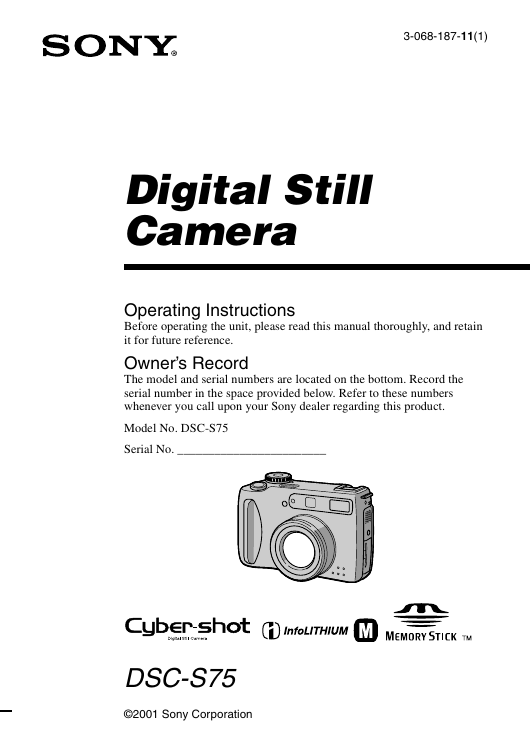
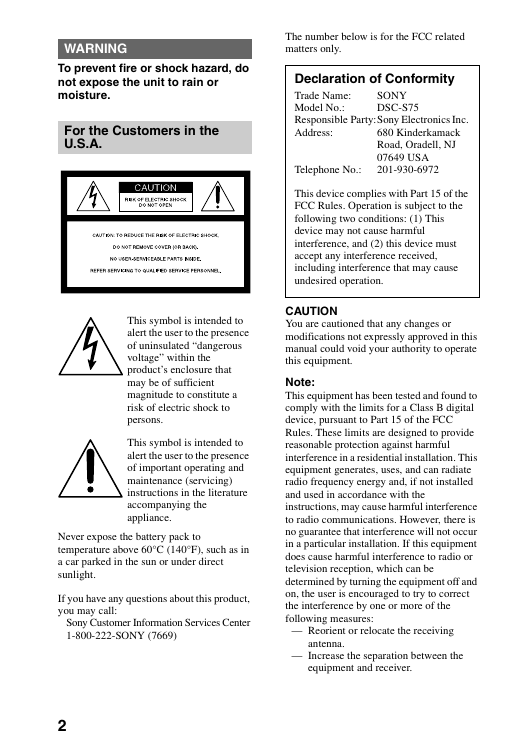

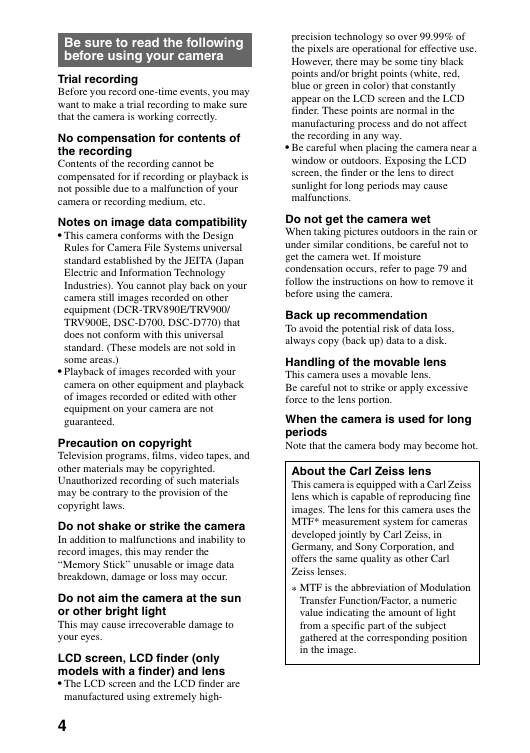
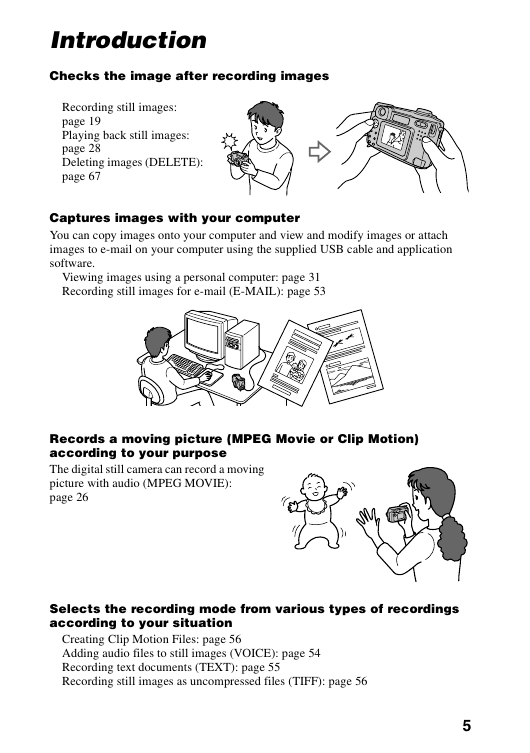
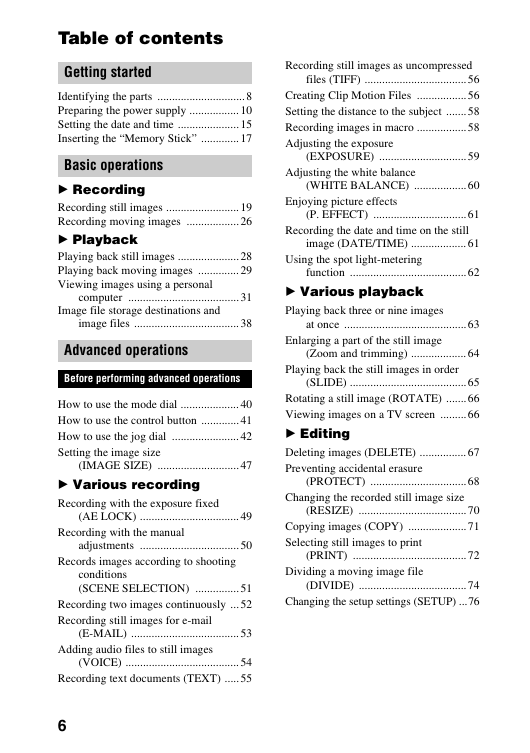
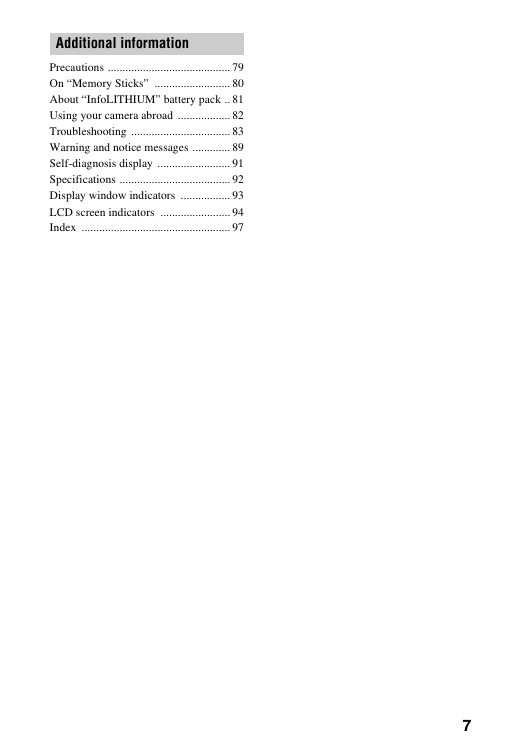
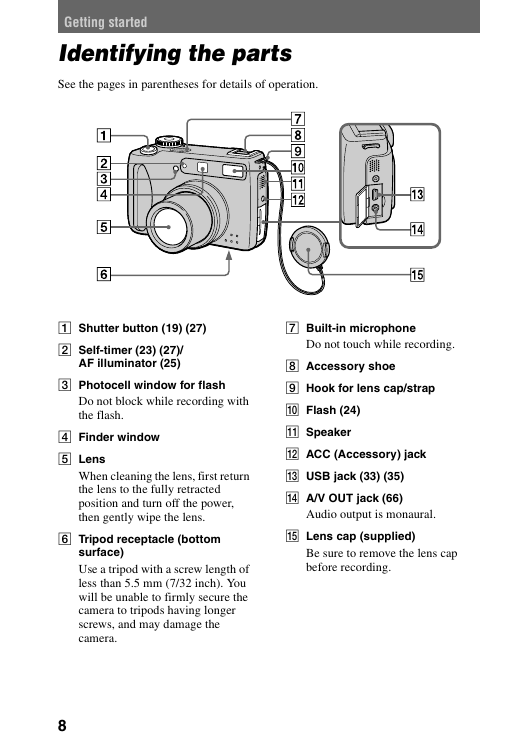








 2023年江西萍乡中考道德与法治真题及答案.doc
2023年江西萍乡中考道德与法治真题及答案.doc 2012年重庆南川中考生物真题及答案.doc
2012年重庆南川中考生物真题及答案.doc 2013年江西师范大学地理学综合及文艺理论基础考研真题.doc
2013年江西师范大学地理学综合及文艺理论基础考研真题.doc 2020年四川甘孜小升初语文真题及答案I卷.doc
2020年四川甘孜小升初语文真题及答案I卷.doc 2020年注册岩土工程师专业基础考试真题及答案.doc
2020年注册岩土工程师专业基础考试真题及答案.doc 2023-2024学年福建省厦门市九年级上学期数学月考试题及答案.doc
2023-2024学年福建省厦门市九年级上学期数学月考试题及答案.doc 2021-2022学年辽宁省沈阳市大东区九年级上学期语文期末试题及答案.doc
2021-2022学年辽宁省沈阳市大东区九年级上学期语文期末试题及答案.doc 2022-2023学年北京东城区初三第一学期物理期末试卷及答案.doc
2022-2023学年北京东城区初三第一学期物理期末试卷及答案.doc 2018上半年江西教师资格初中地理学科知识与教学能力真题及答案.doc
2018上半年江西教师资格初中地理学科知识与教学能力真题及答案.doc 2012年河北国家公务员申论考试真题及答案-省级.doc
2012年河北国家公务员申论考试真题及答案-省级.doc 2020-2021学年江苏省扬州市江都区邵樊片九年级上学期数学第一次质量检测试题及答案.doc
2020-2021学年江苏省扬州市江都区邵樊片九年级上学期数学第一次质量检测试题及答案.doc 2022下半年黑龙江教师资格证中学综合素质真题及答案.doc
2022下半年黑龙江教师资格证中学综合素质真题及答案.doc